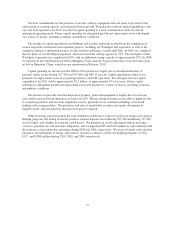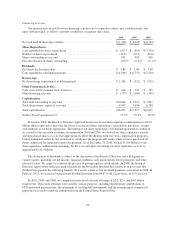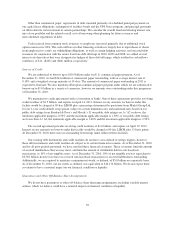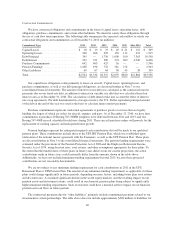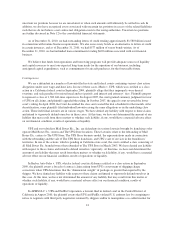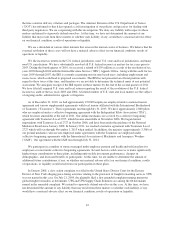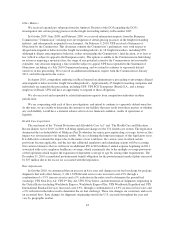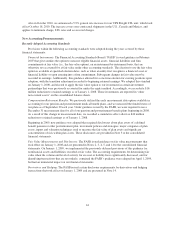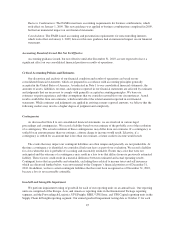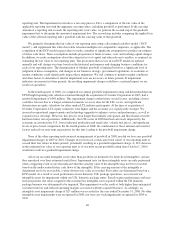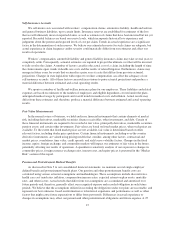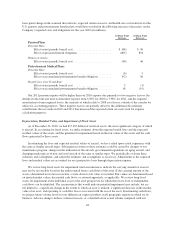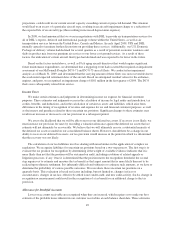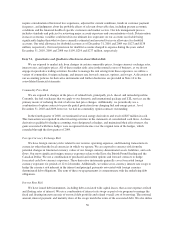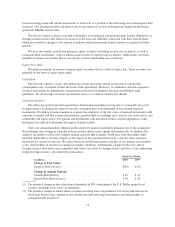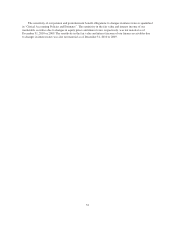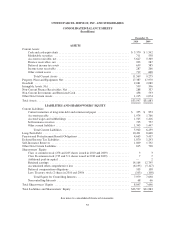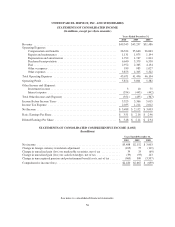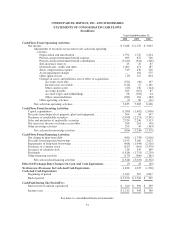UPS 2010 Annual Report Download - page 59
Download and view the complete annual report
Please find page 59 of the 2010 UPS annual report below. You can navigate through the pages in the report by either clicking on the pages listed below, or by using the keyword search tool below to find specific information within the annual report.Self-Insurance Accruals
We self-insure costs associated with workers’ compensation claims, automotive liability, health and welfare,
and general business liabilities, up to certain limits. Insurance reserves are established for estimates of the loss
that we will ultimately incur on reported claims, as well as estimates of claims that have been incurred but not yet
reported. Recorded balances are based on reserve levels, which incorporate historical loss experience and
judgments about the present and expected levels of cost per claim. Trends in actual experience are a significant
factor in the determination of such reserves. We believe our estimated reserves for such claims are adequate, but
actual experience in claim frequency and/or severity could materially differ from our estimates and affect our
results of operations.
Workers’ compensation, automobile liability and general liability insurance claims may take several years to
completely settle. Consequently, actuarial estimates are required to project the ultimate cost that will be incurred
to fully resolve the claims. A number of factors can affect the actual cost of a claim, including the length of time
the claim remains open, trends in health care costs and the results of related litigation. Furthermore, claims may
emerge in future years for events that occurred in a prior year at a rate that differs from previous actuarial
projections. Changes in state legislation with respect to workers compensation can affect the adequacy of our
self-insurance accruals. All of these factors can result in revisions to prior actuarial projections and produce a
material difference between estimated and actual operating results.
We sponsor a number of health and welfare insurance plans for our employees. These liabilities and related
expenses are based on estimates of the number of employees and eligible dependents covered under the plans,
anticipated medical usage by participants and overall trends in medical costs and inflation. Actual results may
differ from these estimates and, therefore, produce a material difference between estimated and actual operating
results.
Fair Value Measurements
In the normal course of business, we hold and issue financial instruments that contain elements of market
risk, including derivatives, marketable securities, finance receivables, other investments, and debt. Certain of
these financial instruments are required to be recorded at fair value, principally derivatives, marketable securities,
pension assets, and certain other investments. Fair values are based on listed market prices, when such prices are
available. To the extent that listed market prices are not available, fair value is determined based on other
relevant factors, including dealer price quotations. Certain financial instruments, including over-the-counter
derivative instruments, are valued using pricing models that consider, among other factors, contractual and
market prices, correlations, time value, credit spreads, and yield curve volatility factors. Changes in the fixed
income, equity, foreign exchange, and commodity markets will impact our estimates of fair value in the future,
potentially affecting our results of operations. A quantitative sensitivity analysis of our exposure to changes in
commodity prices, foreign currency exchange rates, interest rates, and equity prices is presented in the “Market
Risk” section of this report.
Pension and Postretirement Medical Benefits
As discussed in Note 5 to our consolidated financial statements, we maintain several single-employer
defined benefit and postretirement benefit plans. Our pension and other postretirement benefit costs are
calculated using various actuarial assumptions and methodologies. These assumptions include discount rates,
health care cost trend rates, inflation, compensation increase rates, expected returns on plan assets, mortality
rates, and other factors. Actual results that differ from our assumptions are accumulated and amortized over
future periods and, therefore, generally affect our recognized expense and recorded obligation in such future
periods. We believe that the assumptions utilized in recording the obligations under our plans are reasonable, and
represent our best estimates, based on information as to historical experience and performance as well as other
factors that might cause future expectations to differ from past trends. Differences in actual experience or
changes in assumptions may affect our pension and other postretirement obligations and future expense. A 25
47


